The midsize SUV segment is packed with options, and the Ford Everest has long been a favorite among Filipinos. The Sport variant sits in the middle of the lineup, offering a balanced mix of rugged aesthetics, modern tech, and comfort. While it doesn’t boast all the bells and whistles of the Titanium trim, it makes a strong case for itself with its sleek blacked-out design and practical feature set.
But does the Sport offer real value despite only running on a 4×2 drivetrain? Is this the go-to variant for family vehicle or should you aim higher for the Titanium trims? I drove one for a week and here’s our verdict.
Bold looks with a sporty edge
The Ford Everest Sport lives up to its name with an aggressive, blacked-out exterior. The grille, badging, and trim are all finished in black, lending it a stealthy yet premium appearance. While the Sport-exclusive Lightning Blue color is a head-turner, the black-and-white tester that I drover offers a sophisticated contrast (read: basic) that many, like myself, will appreciate.
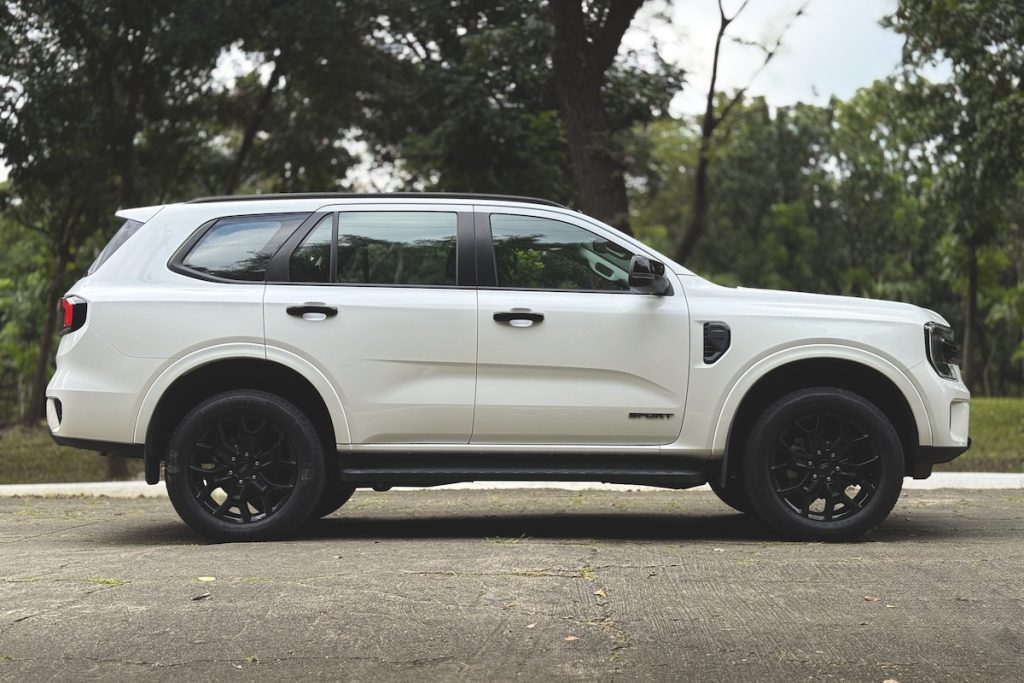
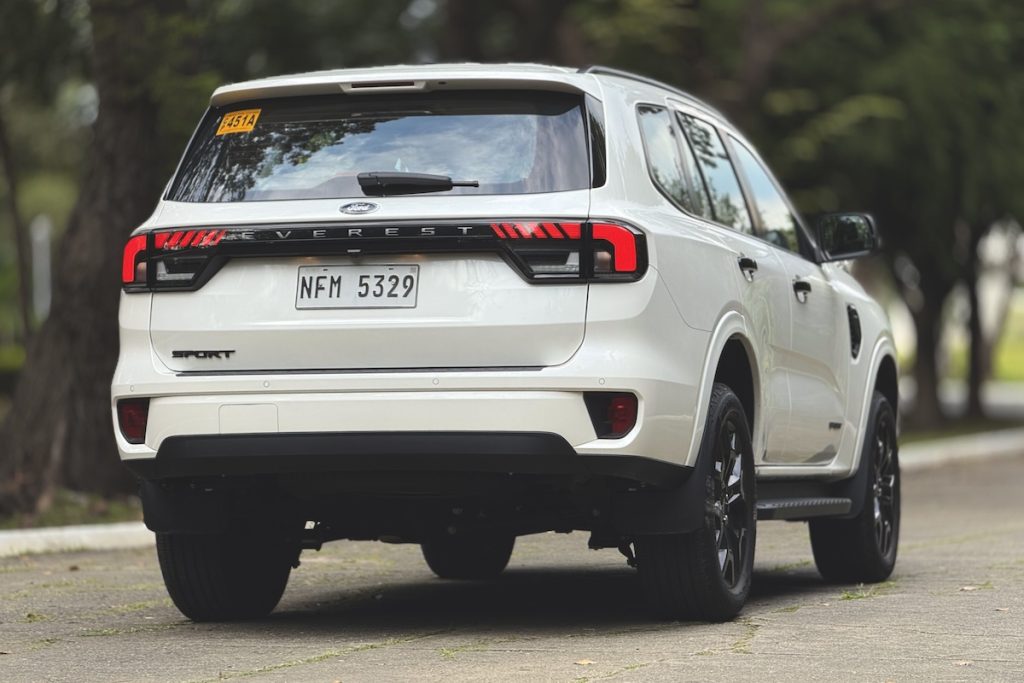
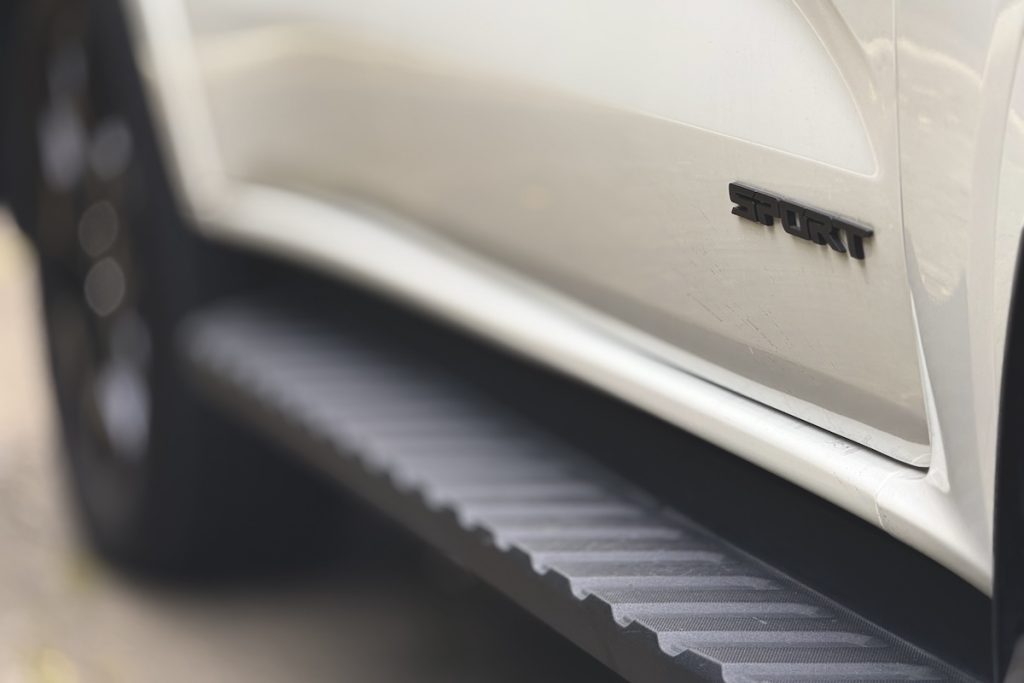
Lighting plays a big role in its modern look, with full LED C-shaped headlamps and fog lamps providing excellent illumination. The C-shaped LED taillights add to its contemporary appeal, ensuring the Everest Sport looks sharp from every angle. Its size and proportions remain imposing, with 227mm of ground clearance and an 800mm water-wading capability, making it well-suited for city streets and light off-road adventures. The 20-inch blacked-out alloy wheels—identical to the ones on the Titanium—complete the stylish package.
Rugged yet refined interior
Step inside, and the Everest Sport greets you with a cabin that balances ruggedness with a premium feel. Leather upholstery covers the seats, giving it a touch of class without unnecessary chrome accents. The minimalistic yet modern design ensures it doesn’t need flashy elements to stand out.
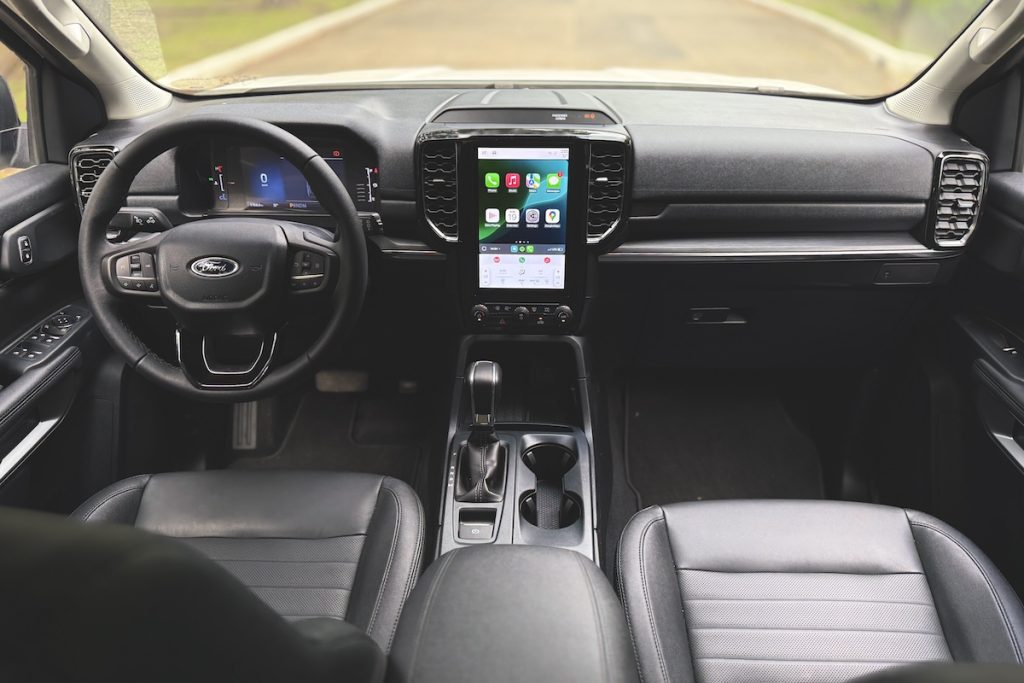
The driver’s seat is a comfortable place to be, with power adjustments and lumbar support ensuring long drives remain fatigue-free. Storage options are generous, including a split-opening glovebox for added convenience. Front passengers get the same comfort, with power seat adjustments—a rarity in this segment.
In the second row, reclining seats offer decent legroom, though not class-leading. Roof-mounted air vents come with fan controls along with USB-A and USB-C charging ports, ensure passengers remain comfortable and connected. However, the absence of an AC power outlet—reserved for the Titanium variant—feels like a missed opportunity at this point.
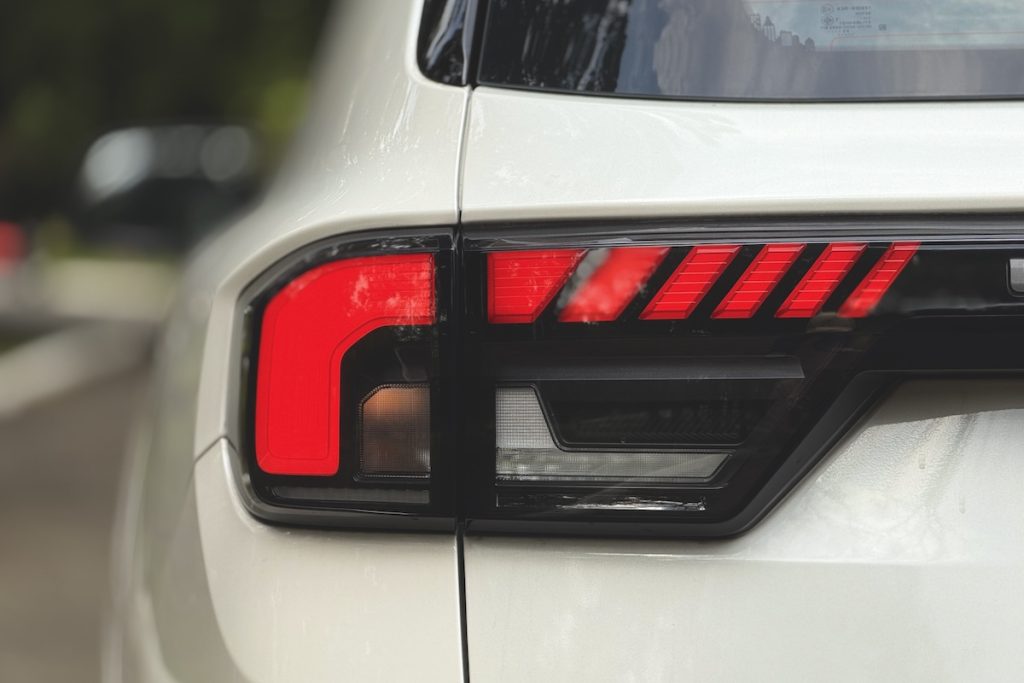
The third row is best suited for children or passengers under 5’6”, as space is limited. On the bright side, it does come with cupholders and air vents, making it reasonably comfortable for shorter journeys. The seats require manual adjustment instead of being power-folding, but cargo space remains decent, significantly expanding when the third row is folded.
Tech that gets the job done
The Everest Sport comes with a 10-inch touchscreen infotainment system, slightly smaller than the 12-inch unit in the Titanium. However, it retains physical controls for climate and media, which enhances usability while driving. Wireless Apple CarPlay and Android Auto provide seamless smartphone connectivity, while a USB port behind the rearview mirror makes dashcam installation a breeze. The wireless charging pad is a welcome feature, offering fast and convenient charging.
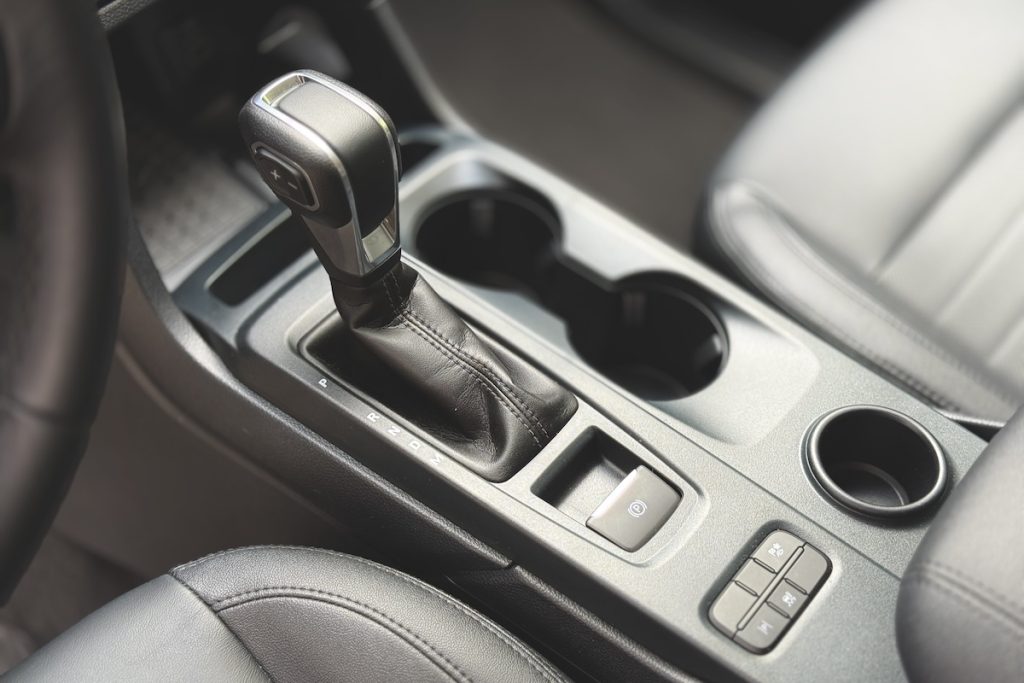
In terms of safety, it covers the basics well, with multiple airbags, ABS with EBD, an electronic parking brake, and automatic brake hold. Rear parking sensors and a backup camera make maneuvering easier, but advanced driver assistance features are limited. Unlike the Titanium 4×4, the Sport variant lacks Adaptive Cruise Control and Lane-Keeping Assist. The absence of Blind-Spot Monitoring is another downside, as this feature has become a standard expectation in this price range.
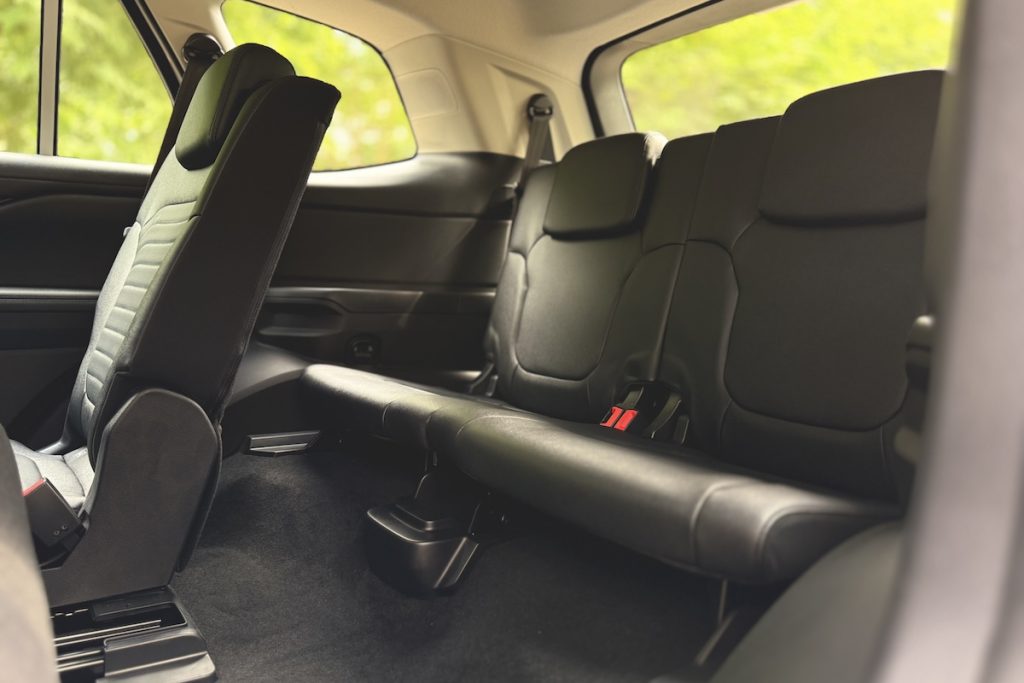
Smooth yet tamed performance
Under the hood, the Everest Sport packs a 2.0L single-turbo diesel engine producing 168 hp and 405 Nm of torque. While these numbers are respectable, acceleration feels more relaxed than expected. Ford has clearly tuned this SUV for comfort rather than outright power, which makes sense for buyers who prioritize daily usability over off-road performance. Braking is solid, with a reassuring bite and easy modulation. The steering is light and well-assisted, making city driving effortless, though some might prefer more feedback for a better connection with the road.
The suspension leans towards the softer side, ensuring a plush ride over bumps. However, this does lead to a slightly floaty feel at higher speeds. Handling remains nimble for a vehicle of its size, and high-speed stability is commendable. Visibility could be improved, but adjusting the driver’s seat higher helps mitigate this issue.
Fuel efficiency is decent, with an average of 7 km/L in the city and 13 km/L on the highway. While it’s not the most fuel-efficient option in its class, these numbers largely depend on driving habits.
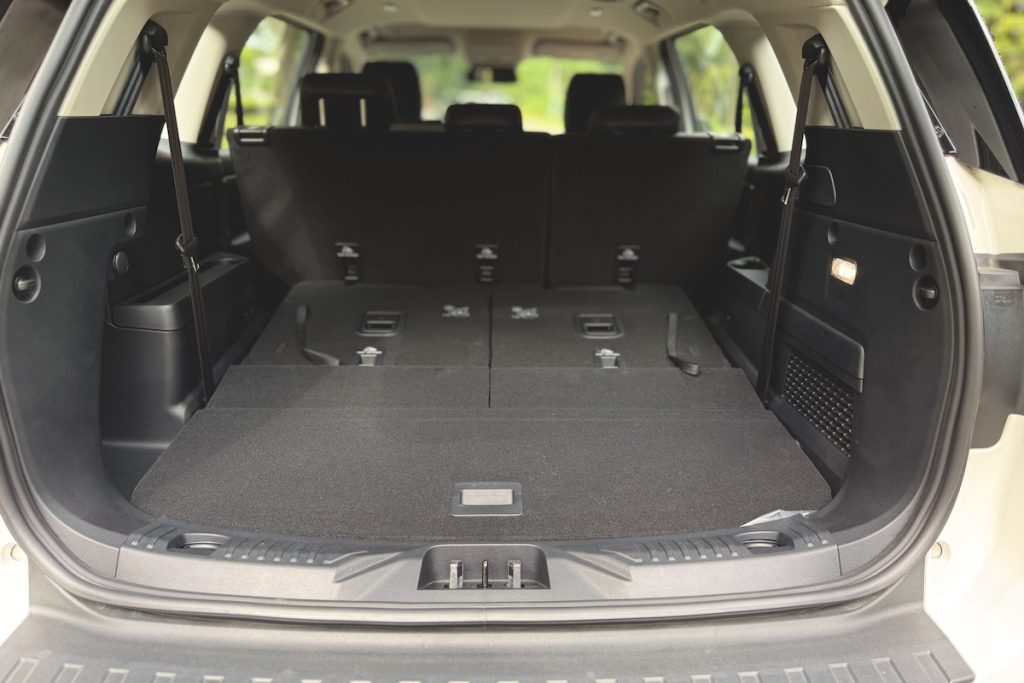
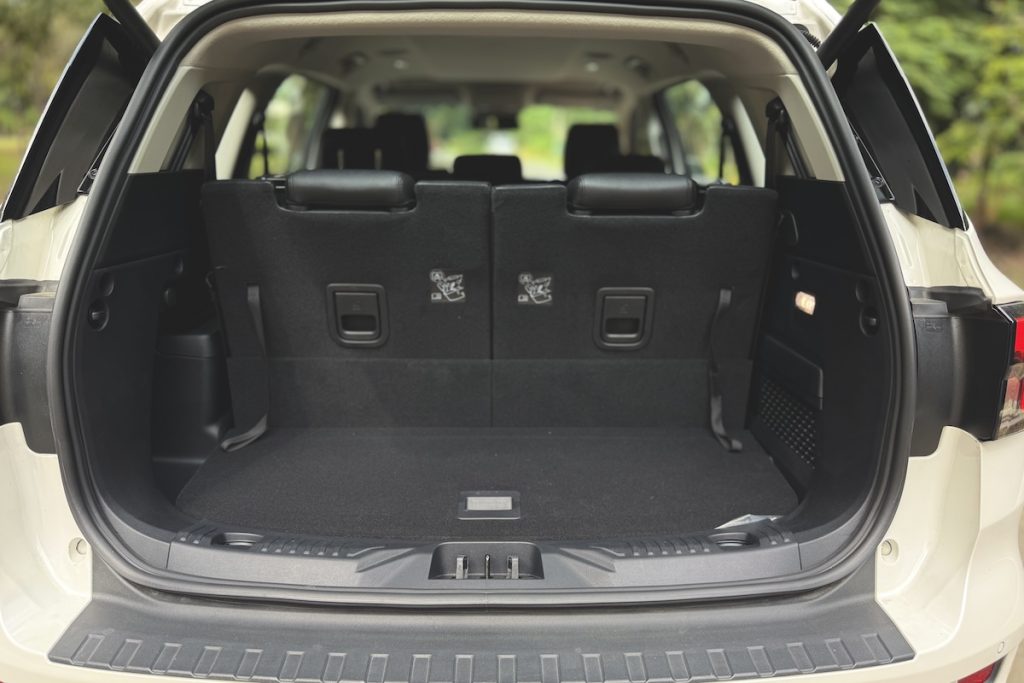
A well-rounded SUV that hits the sweet spot
Priced at approximately PHP 2.1 million, the Ford Everest Sport sits comfortably in the middle of the midsize SUV segment. It offers a stylish and well-equipped package without reaching the premium price tag of the Titanium variant.
With its blacked-out aesthetics, modern tech, and comfortable ride, the Everest Sport is an appealing choice for buyers who want a rugged yet refined SUV. While it lacks some advanced features like Blind-Spot Monitoring and Adaptive Cruise Control, it still delivers excellent value. If you don’t need a 4×4 system and simply want a capable, stylish, and spacious SUV for family trips, mall getaways, and the occasional road adventure, the Everest Sport ticks all the right boxes.

